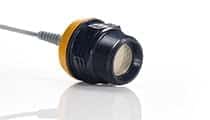

Ultrasonic sensors, thankfully, are not as complex as cars. However, to many operators and engineers, they are little black boxes. This post aims to explain ultrasonic sensing technology. After all, it’s pretty simple, and it just may help you keep your sensors running optimally.
As you might gather, an ultrasonic sensor works by using the principles of sound. The term ultrasonic actually means ‘above human hearing’, as the sensor uses a frequency that we cannot hear. This is actually important to the function of the sensor, because the specific frequency used is very rarely generated elsewhere – avoiding interference with other sources of sound.
The sensor transmits a series of sound waves that hit the intended target and bounce back. The sensor calculates the time elapsed for the sound waves to return to the transmitter, and converts that to a distance, level, volume, or open channel flow rate.
The weakness of an ultrasonic sensor is also its strength: it transmits through the air. While this enables the non-contact sensing that makes it so versatile and maintenance free, it also introduces variables. Air density is the core variable that can cause problems that range from a slight drift in accuracy to false readings.
Air density has several contributing factors. Temperature, altitude, and humidity are general location based variables. Others are application specific, such as heavy dust and thick vapors. Each will have an effect on air density, and must be accounted for when selecting and installing an ultrasonic.
In most cases, the variables can be mitigated without meaningful performance loss. For example, APG ultrasonic sensors come with temperature sensors installed to automatically adjust for temperature. However, in extreme environments, such as when heavy dust, foam, or vapor layers are present, an ultrasonic may not be the best solution.
The target must also be considered. Hard, flat, reflective surfaces are ideal for ultrasonic use. Soft, absorbent, or angled surfaces are more difficult because the sound waves can be absorbed or dissipated.
Applications for ultrasonic sensors range from liquid level sensing to object detection. Because they are a non-contact method of measurement, ultrasonic sensors are easy to install and are essentially maintenance-free. For a real-world example of an ultrasonic sensor, check out the APG IRU and LPU lines of here.